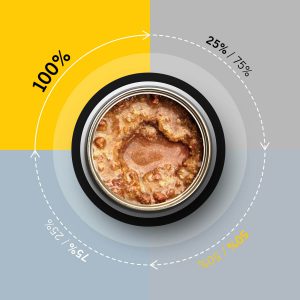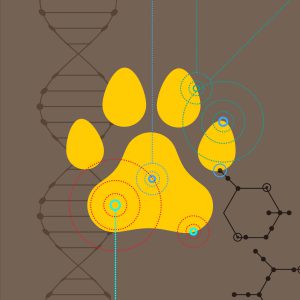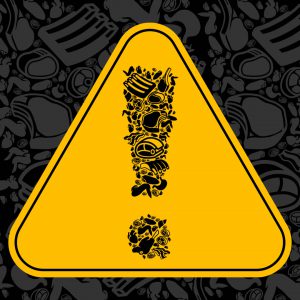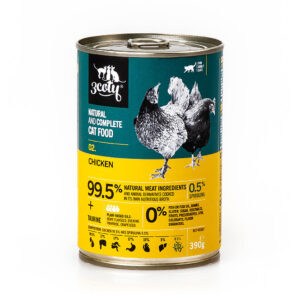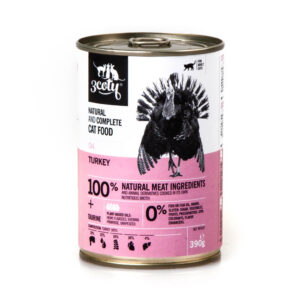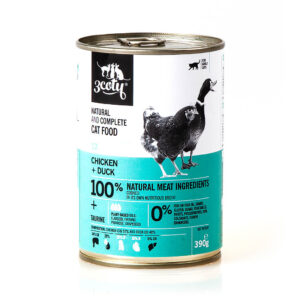Many of us have heard of taurine as an ingredient in energy drinks for humans. Every cat owner knows to look at the cat food label and check for taurine, or at least everyone should do. We all know that taurine is needed but really, there is much more to it than selecting the food that has the highest amount.
What is taurine?
Taurine is an amino-acid. So before we start to talk about it, let us talk about what amino acids are.
Amino-acids are organic compounds, in chemical terms it is a group of organic molecules that consist of a basic amino group (―NH2), an acidic carboxyl group (―COOH), and an organic R group (or side chain) that is unique to each amino acid. The term amino acid is short for α-amino [alpha-amino] carboxylic acid. Each molecule contains a central carbon (C) atom, to which both an amino and a carboxyl group are attached. The remaining two bonds of the carbon atom are generally satisfied by a hydrogen (H) atom and the R group. The chemical formula looks like this:

In general, we don’t have to know the structure of this compound. But because amino acids are so important and play such a significant role in any living organism I think it is worth knowing not least because so many of us have heard about them. We also know that there are different amino acids and they differ from each other in the chemical structure of the R group.
Why then are amino acids so important to all of us? They are probably one of the most important chemical molecules on earth because they are the building blocks of proteins, which we have also all heard about.
Let’s talk about proteins
Proteins play a primary role in life on Earth. They catalyze the majority of chemical reactions in our body or to be more specific in a cell of living organism like humans or….cats. They provide many of the structural elements of a cell, and they help to bind cells together into tissues. Some are responsible for the transport of vital materials from outside of the cell to its inside. Some, in the form of antibodies, protect us from diseases like viruses. Many hormones are proteins and proteins also control the activity of genes.
So as we can see amino acids and proteins play a crucial role in the well-being of any living organism.
The human body needs 20 different amino acids to grow and function properly. Though all 20 of these are important for our health, only nine amino acids are classified as essential. These are histidine, isoleucine, leucine, lysine, methionine, phenylalanine, threonine, tryptophan and valine. Unlike nonessential amino acids, essential amino acids can’t be made by the human body and must be obtained through our diet. When you eat protein, it’s broken down into amino acids by our body which are used to build the proteins that our body needs.
In cats…
In cats it is similar. Dietary protein provides amino acids that cats can not synthesize. They are also called Essential Amino Acids and are required to build up many different proteins in the body. They also supply dispensable amino acids which can be synthesised when the appropriate level and source of carbon and nitrogen is provided. For cats, the amino acids considered essential are – arginine, histidine, isoleucine, leucine, lysine, methionine, phenylalanine, threonine, tryptophan, valine and of course taurine. We can see that cats have more essential amino acids than for example humans and this is mostly related to them being obligate carnivores and having very short digestive track. And cats need taurine.
The good news is that taurine is one of the most abundant free amino acid in animals. Taurine sources include the brain, heart and muscle. This is also one of the many reasons why a meat-based diet is beneficial for cats. Muscle, heart and other tissue parts are foods high in taurine for cats.
Most animals synthesise taurine in their body from another amino acid, cysteine but cats lack this enzymatic mechanism and can not produce taurine. That’s why cats get taurine from their diet.
Right or wrong levels of taurine
How much taurine should be in cat food?
A taurine deficiency in cats can lead to serious illness and irreversible conditions in cats. These include Feline Central Retinal Degeneration (FCRD), Dilated Cardiomyopathy (DCM), blindness, heart failure, poor immune response, poor neonatal growth, decreased brain weight and low survival rate of kittens.
On the other hand, there is are no reports showing that feeding large amounts of taurine can cause any harm. So after a deficiency of taurine was determined in some commercial cat food in the middle of the 20th century, this problem is very rare and uncommon.
There is no distinct dietary requirement for taurine in cats diets as the need depends on diet composition, type and quality and digestibility of protein and fibre. In general, it is recommended that taurine levels in cat food should be 425mg per 1 kg of cat food. At 3coty®, though our food is 100% meat-based, we still supplement it with taurine to be more than sure that our cats’ diet is the best and contains everything that is required and is fully balanced.
There is a debate about taurine decomposing in low or high temperatures which has not been confirmed. Scientific data shows that the decomposition of taurine only starts in at very high temperatures of 300°C and above.
3coty® cat food is produced under strict regulations and biochemical laboratory tests of our food show that it contains sufficient taurine and the production process has non or very little effect on its levels.
We stand by complete diet and natural cat feeding giving your cat everything it needs in its diet, so no additional taurine supplement needs to be added when feeding 3coty® natural cat food.

